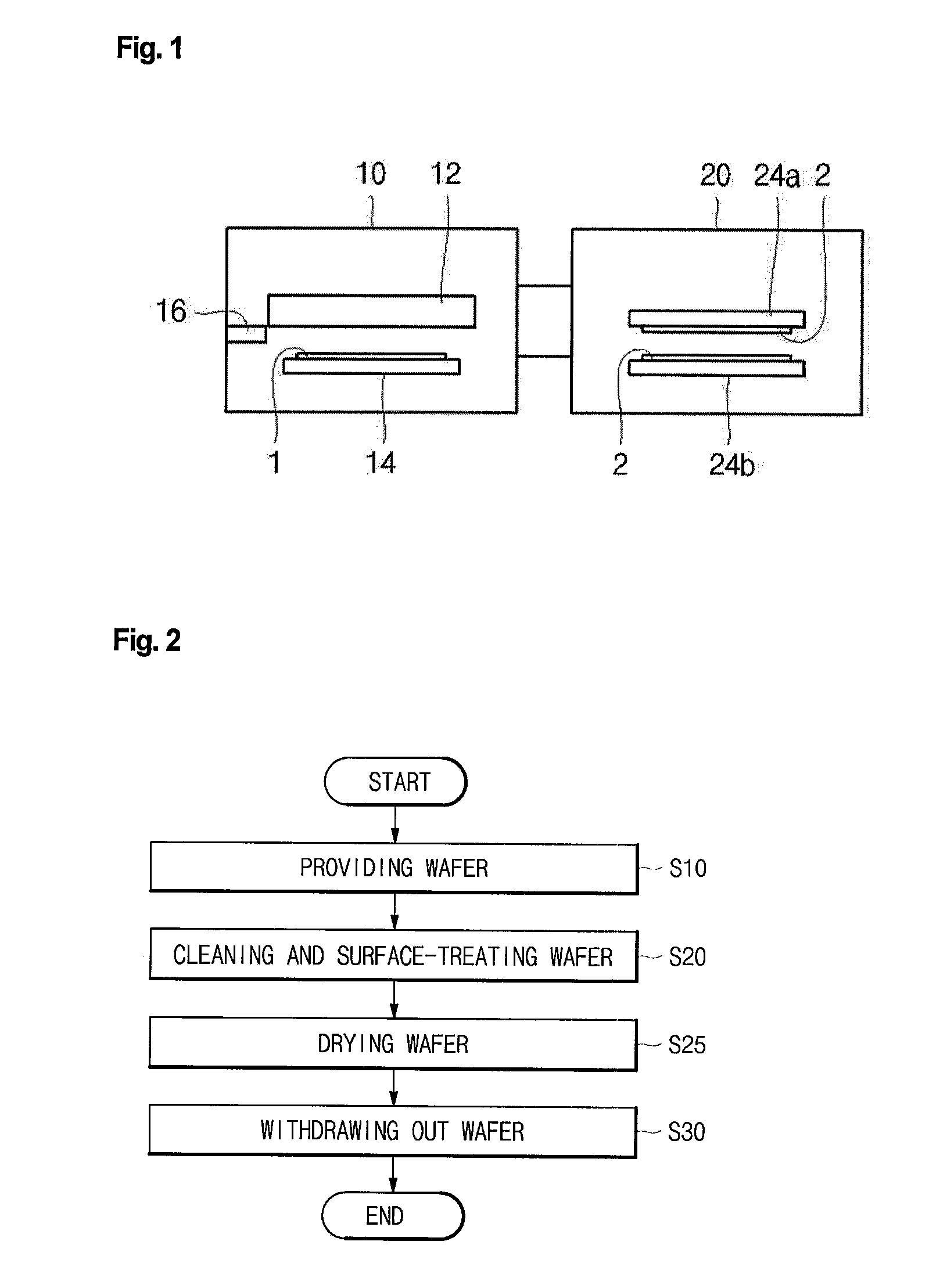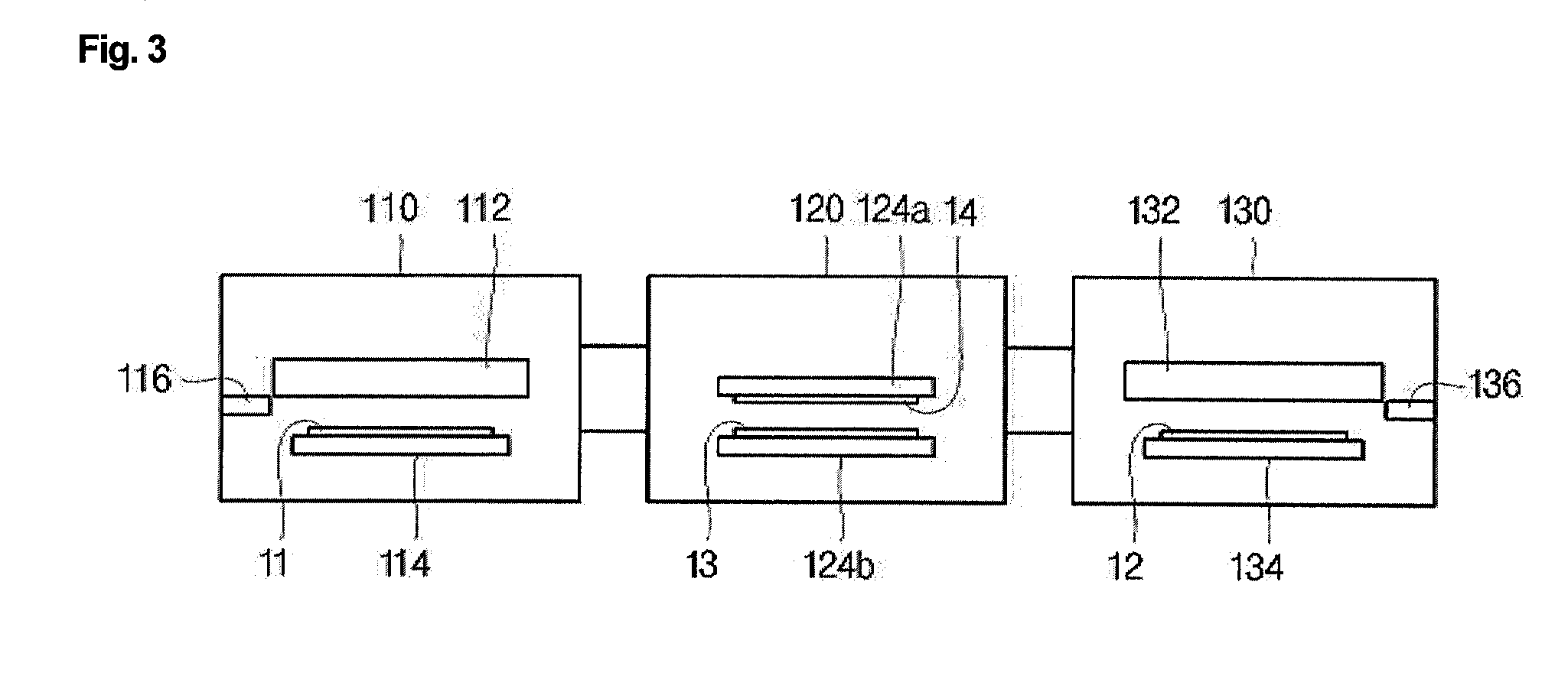Wafer cleaning method and wafer bonding method using the same
- Summary
- Abstract
- Description
- Claims
- Application Information
AI Technical Summary
Benefits of technology
Problems solved by technology
Method used
Image
Examples
example 1
[0104]FIGS. 6 and 7 are photographs illustrating a wafer surface before and after cleaning and surface treatment according to the example 1.
[0105]First (RMA: about 1 nm) and second wafers of 8 inches were seated on a chuck of process chamber of an A type atmospheric pressure plasma device having power of 1,000 W. The first and second wafers may be planarized by CMP (Chemical Mechanical Polishing) process if it is needed. Fingerprints were arbitrarily formed on a bonding surface of the first wafer for evaluating cleanness of the wafer in the step of cleaning and surface-treating. The first and second wafers were cleaned and surface-treated by supplying atmospheric pressure plasma and water vapor together to the bonding surfaces of the wafers, where the atmospheric pressure plasma was formed by supplying nitrogen in 300 liter / min under atmospheric pressure, and the water vapor was formed by heating a deionized water. In this time, the atmospheric pressure plasma and water vapor were s...
example 2
[0107]FIGS. 8 and 9 are photographs illustrating a wafer surface before and after cleaning and surface treatment according to the example 2.
[0108]In the example 2, all processes were performed the same as the example 1 except that the water vapor was supplied by a nozzle spray method.
[0109]As shown in FIG. 8, fingerprints existed on the surface of the first wafer before cleaning of the first wafer. However, as shown in FIG. 9, fingerprints were removed from the surface of the first wafer after the cleaning of the first wafer. Accordingly, it was confirmed that the cleaning and surface-treatment was completely performed for the bonding surface of the first wafer in the step of cleaning and surface-treating.
[0110]It was confirmed that the wafers bonded according to the example 2 kept an improved bonding state. That is, the bonding strength of the wafers before annealing was higher than 220 mJ / m2. After annealing at a temperature of 300° C., the bonding strength of the bonded wafers wa...
example 3
[0111]A bonding surface of a first wafer of 3 inches was coated with a SOG solution by spin coating so as to form a SOG layer. Next, the SOG layer was planarized by pressing its upper part with a transparent panel and photocured by irradiating UV ray to the upper part of the transparent panel, thereby forming a SOG film. Then, the first and second wafers were cleaned and surface-treated, and bonded to each other through the same processes as the example 1.
[0112]It was also confirmed that the cleaning and surface-treatment was completely performed for the bonding surface of the first wafer in the step of cleaning and surface-treating like the example 1. Thus, it was confirmed that the first and second wafers bonded according to the example 3 had improved bonding strength.
PUM
| Property | Measurement | Unit |
|---|---|---|
| Pressure | aaaaa | aaaaa |
| Transparency | aaaaa | aaaaa |
Abstract
Description
Claims
Application Information
 Login to View More
Login to View More - R&D
- Intellectual Property
- Life Sciences
- Materials
- Tech Scout
- Unparalleled Data Quality
- Higher Quality Content
- 60% Fewer Hallucinations
Browse by: Latest US Patents, China's latest patents, Technical Efficacy Thesaurus, Application Domain, Technology Topic, Popular Technical Reports.
© 2025 PatSnap. All rights reserved.Legal|Privacy policy|Modern Slavery Act Transparency Statement|Sitemap|About US| Contact US: help@patsnap.com



